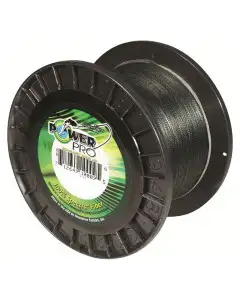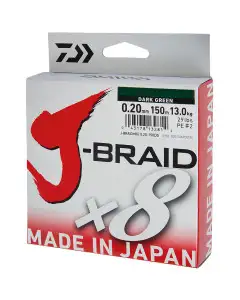This is a demo store. No orders will be fulfilled.
How to Spool a Reel Without Line Twist

Spooling a reel without line twists is essential for a smooth and efficient fishing experience. Line twist can lead to tangles, knots, and decreased casting distance, causing frustration for anglers of all skill levels. This article will discuss the importance of properly spooling a reel and provide step-by-step instructions to ensure a twist-free fishing line.
Skip to the Line Spooling Tutorial
What is Line Twist?
Line twist occurs when the fishing line twists around the spool of the reel, causing tangles and knots. It is mainly caused by improper spooling techniques or by the way the lure or bait is retrieved. A twisted line can reduce casting distance, and accuracy, and can even break under pressure. Avoiding line twists is crucial for successful and enjoyable fishing.
The Importance of Properly Spooling a Reel
1. Preventing Tangles and Knots
A well-spooled reel will help prevent tangles and knots, which can be time-consuming and frustrating to untangle. Line twist is one of the primary causes of these issues. By spooling your reel correctly, you can minimize line twists and enjoy a smoother, hassle-free fishing experience.
2. Increasing Casting Distance
Line twist can negatively impact your casting distance, as it causes the line to have uneven tension. This unevenness can reduce casting distance and accuracy, making reaching your desired fishing spot harder. Properly spooling your reel without line twists will enable you to cast further and with greater precision.
3. Prolonging the Life of Your Line
Line twists can cause unnecessary stress on your fishing line, leading to premature wear and tear. A twisted line is more prone to breaking, fraying, and weakening over time. By spooling your reel correctly, you can extend the life of your line and save money on replacement costs.


Choosing the Right Fishing Line
Monofilament
Monofilament is the most common type of fishing line, made from a single strand of nylon. It is known for its stretch, which can be both an advantage and a disadvantage. While the stretch can help absorb the shock of a fish strike, it can also make the line more prone to twisting. If you choose to use monofilament, it is essential to spool your reel correctly to minimize line twists.
Fluorocarbon
Fluorocarbon is a popular choice for its low visibility underwater and higher sensitivity compared to monofilament. It is less prone to twisting, making it an excellent option for anglers looking to avoid line twist issues. However, fluorocarbon is more expensive than monofilament and can be more challenging to handle for beginners.
Braid
The braid line is made from multiple strands of synthetic fibres woven together, making it incredibly strong and resistant to abrasion. It is highly sensitive and has minimal stretch, allowing for improved bite detection. While a braided line is less prone to line twists than monofilament, it can still occur if not properly spooled.
1. Gather Your Tackle
Before you begin, gather the necessary equipment:
- Fishing reel
- Fishing line
- Line spooling tool (optional)
- Scissors or line clippers
- Damp cloth or sponge
- Pencil or screwdriver (for spool support)
2. Prepare the Reel
Before even getting the new line ready, remove any old line from the reel using scissors or a line cutter. Be sure to then clean the spool with a damp cloth to remove any dirt, debris, or old line.
3. Attach the Line to the Reel
Be sure to choose the right type of line based on the manufacturer's recommendations for your rod and reel.
Then, run the end of the fishing line through the rod guides and attach it to the reel arbour using a secure knot. An arbour knot or uni-knot is recommended for this purpose. Trim any excess line from the knot, leaving a short tag end.


4. Determine the Correct Line Orientation
- To avoid a line twist, it is crucial to spool the line onto the reel in the same direction it comes off the spool.
- To determine the correct orientation, place the spool on the floor with the label facing up.
- Pull the line off the spool and observe whether it is coming off the top or the bottom.
- Next, hold the reel with the handle facing you and turn the handle as if you were reeling in.
- Note which direction the reel is rotating. The line should come off the spool in the same direction the reel rotates.
- Check the reel's drag system and make sure it's properly set to prevent line tangles and backlash.
5. Prepare the Line Spool
If you have a line spooling tool, set it up according to the manufacturer's instructions and secure the line spool in the correct orientation.
If you do not have a spooling tool, insert a pencil or screwdriver through the centre of the spool and have someone hold it in place, ensuring that the line comes off the spool in the correct direction.
6. Apply Tension to the Line
Maintaining proper tension while spooling the line is crucial to prevent line twists. Hold the line between your thumb and index finger, or use a damp cloth or sponge to create tension as the line comes off the spool. This will help the line lay evenly on the reel and minimize the risk of twist.
Be sure to hold the line taut with one hand and start winding the line onto the spool with the other hand, making sure it's winding evenly onto the spool.


7. Fill the Reel
Begin reeling in the line, ensuring that the line comes off the spool in the same direction as the reel's rotation. Keep consistent tension on the line as you fill the reel.
Be sure not to overfill the reel, as this can lead to line management issues. Fill the spool to within 1/8 inch of the rim to prevent overfilling, which can lead to line tangles and twists.
8. Check for Line Twists
You can check for line twists in what you just spooled by holding the rod with the line extended and looking for any twists or loops in the line.
How Do You Get Rid of Line Twists?
If you see any twists or loops, remove the line from the spool and rewind it onto the spool with the twist or loop facing the opposite direction.
Be sure to check for line twists again before you hit the water to ensure a successful and enjoyable fishing trip.
9. Secure the Line and Trim Excess
Once you have filled the reel, secure the line by attaching a rubber band or line clip to hold it in place. Trim any excess line, leaving a few inches of extra line for rigging.
How Do You Put Fishing Line on a Reel Without Twisting It?
Line for Twist Before Spooling: Uncoil a few yards of line and check for any existing twists & remove it before spooling the reel to avoid further issues.
Use Line Conditioner: Designed to reduce line memory and friction, making it easier to manage and less prone to twisting.
Check for Line Twist As You Fish: it is essential to regularly check your line for twists and to remove it as soon as possible to prevent further complications.
Practice Proper Casting Techniques: Avoid sudden jerks or whipping motions when casting, as these can contribute to line twists. Instead, use a smooth, fluid motion.
We spool your reels in shops
Although we can talk you through the steps to spooling a reel, it does take some practice and time!
If this is something you struggle with, remember that you can get your reels spooled in Angling Direct stores with a line of your choice! There is a service charge in addition to the cost of your new line or you can bring the line you want spooled with you!
Read more details about our Spooling Service.
Spooling a reel without a line twist is crucial for a successful and enjoyable fishing experience. By following the step-by-step guide and tips provided in this article, you can minimize line twists and ensure a smoother, more efficient fishing adventure.
Remember to choose the right line for your rod and reel, attach the line securely to the spool, and fill the spool evenly to avoid overfilling. Finally, always check for line twists before you hit the water to ensure a successful and enjoyable fishing trip. With this guide, you'll be able to spool a reel without a line twist like a pro.
Happy fishing!
FAQs about Line Twists
Why is it important to spool a reel without line twist?
A twisted line can lead to decreased casting distance, tangled line, and lost fish.
Can I use any type of line to spool my reel?
No, it's important to choose the right type of line for your rod and reel.
How do I know if my line is twisted?
Hold the rod with the line extended and look for any twists or loops in the line.














